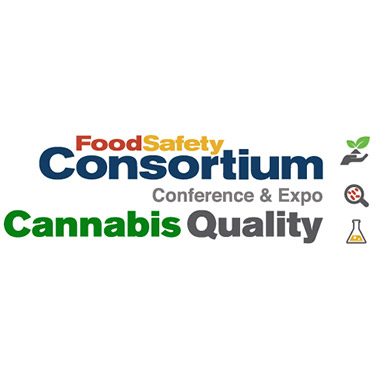Unless they want to shut off the lights upon retirement, private business owners have to think about succession planning. Even more, if all key customer and vendor relationships reside with the owner, there isn’t much value to the business without him or her. Building a strong leadership team and implementing a succession plan are essential to a company’s continued success.
Baby Boomers will be transitioning out of the workplace in vast numbers over the next decade. This exodus, particularly involving those in leadership or ownership positions, will result in substantial transfers of wealth as businesses are shifted across generations or to new owners.
Valuing physical assets, such as equipment and facilities, is relatively simple, but the value of firms that provide services or intellectual assets to clients is harder to define. Their valuation is heavily dependent on their reputations, relationships and management teams. As a result, the long-term survival for many of those businesses is highly reliant on strategic succession planning to build bench strength and the future leadership team.
Begin with a plan
Companies and owners who strategically plan for succession help ensure an orderly transition of management with minimal uncertainty, decreased productivity, fewer employee morale issues, and limited impact on day-to-day business. That’s true especially in family-owned firms, where emotions and personal issues can impede efforts.
However, according to data from CNBC and the Financial Planning Association, 78 percent of small-business owners intend to fund their retirement by selling their company, yet less than 30 percent of companies have a written succession plan.
The lack of planning among larger organizations is even more pronounced. Less than 25 percent of private company boards have an official succession plan, according to the National Association of Corporate Directors.
Branding and clarifying the role
The transition to new leadership – and possibly ownership – doesn’t happen overnight. It may happen faster if the company is known as a great place to work and can provide a successful career path. Competitive compensation and benefits are important, but so is finding a good fit for the position and its responsibilities. Developing a clearly defined role (and the compensation package ranges) will help an owner focus his or her efforts on finding the right person.
Consider the following when defining the leadership role:
- How many years of experience in a similar role does a candidate need?
- What management style fits the culture?
- What education, qualifications or knowledge of the industry must the candidate possess?
- What communication skills does a candidate need? Does the role require negotiating, establishing direction, and instilling confidence from the board of directors, clients, staff and others?
Recruiting options
Besides strategically determining the need for succession planning or backfilling, it is important to develop a communications/recruiting strategy for the position. This includes determining where to look and establishing a budget for the effort.
Internally
Many companies either assume from the start that positions require new blood or that they should automatically promote from within. Growing staff internally by increasing levels of responsibility is important when grooming a trainee for the future. When companies immediately look to fill positions from the outside, it can be demoralizing to employees who wish to advance. Being overlooked can spur people to seek opportunities elsewhere, costing the company valuable employee experience. To be effective and efficient, fully vet internal candidates before searching outside, and make sure they understand what the position requires. It also helps to ask staff what they believe is needed as they may offer fresh insight.
Spreading the word internally also allows companies to mine employee networks. A 2016 Society of Human Resources Management (SHRM) survey indicated that referrals are the top source of new hires for 96 percent of companies with at least 10,000 employees and for 80 percent of firms with under 100 workers.
The do-it-yourself approach
Companies that do not do a lot of recruiting often try to handle the task of finding new leaders themselves. Job postings, LinkedIn, industry sources and other platforms can work, particularly if the recruiter or person heading the search has access to a pipeline of great contacts.
However, relying solely on job listings is usually a poor sourcing strategy. While there may be outstanding candidates scanning the listings at that point, the candidate pool will be limited to those currently looking for a position as opposed to the best possible options. A do-it-yourself talent search can be effective, however, filling a higher-level position often requires more than a single approach.
Outsourcing the recruitment effort
Engaging an executive search firm or professional recruiter opens up a hidden market of talent. Recruiters remain connected to ‘the trenches’ because their livelihoods depend on it. They have typically built up a network of contacts already performing similar roles and can tap into it and proactively target (or ‘head hunt’) the best possible candidates.
Turning to a professional search firm is not cheap. Typically, the cost is a percentage of the first year’s compensation (25 to33 percent is typical) or a flat finder’s fee. But, searching for talent that is critical to a company’s succession planning is not an area to skimp.
Other considerations
A best recruiting practice is to meet with someone at least three times, in three different settings (e.g. office, coffee, and dinner). Each meeting can take on a different tone to closely analyze the individual. Thought-provoking questions can help determine management aptitude, and the more social engagements can help in assessing the personality traits that comprise effective leadership and whether or not the person will fit in.
Give a candidate a thorough review in person, with a background check, and by checking references before making a final offer. Additionally, consider bringing a representative from a key partner, a trusted advisor, or an important client to the dinner meeting and ask their opinion of the candidate.
To ensure success, set aside an adequate transition and training period. Then, let everyone in key positions know about it. This demonstrates to employees that leadership wants to make the transition as smooth as possible.
Too many business leaders and owners fail to recognize the importance of succession planning and developing the best future leaders until the end of their careers.
While time-consuming, succession planning is truly planning for future success. Realistically, preserving an organization’s value for the future can be as challenging as building that value in the first place. Hiring professionals who work with companies on building leaders, transferring the equity of businesses in all industries, and valuation is a wise investment.






